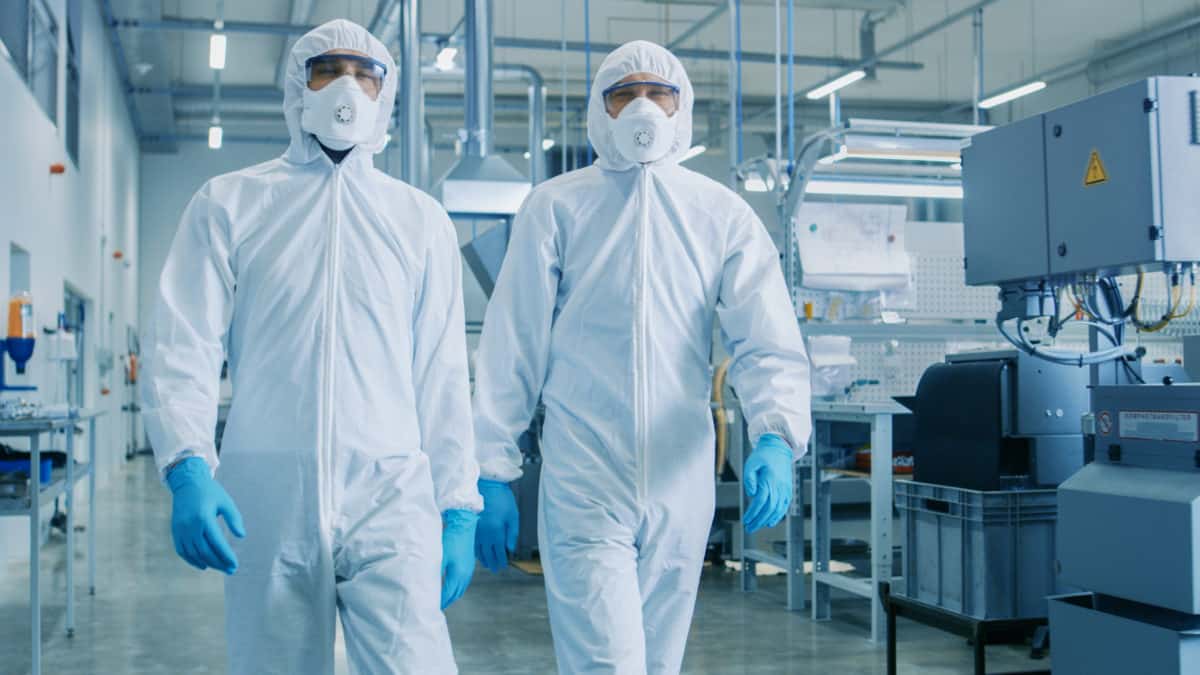
When it comes to sustainability, there's no time to waste – the best time to act is now. Our planet's health depends on it.
For that reason, workplaces throughout the UK are rapidly rolling out environmentally friendly policies and introducing minimal waste practice wherever possible. It's a great initiative. And where carbon footprint is reduced or single use plastic usage is eliminated, there's no doubt that it's a step in the right direction for all of us.
The problem is that, in a cleanroom, this is easier said than done. In sterile environments where every precaution is taken to maintain a clean atmosphere and hygiene is a top priority, it might seem impossible to 'go green'.
Despite this, there are countless ways to introduce sustainability to any cleanroom. Here are just a few shining examples.
On the face of it, sustainability in a cleanroom is a significant challenge. These workplaces typically have stringent workflows and strict procedures in place to prevent allergens and pollutants from spreading.
That being the case, many cleaning materials are used once and once only. After they've been contaminated, re-use would present too great a risk and so they need to be discarded. This creates a huge amount of waste and cleaning products must constantly be re-stocked.
On top of that, cleanrooms are energy-hungry. Some of them are operational 24/7 and draw a huge amount of electricity. Expensive, complex machinery has a devastating energy demand and many components are powered up even when they're not being used.
And then there's the heating, ventilation, and air conditioning (HVAC) system. Air flow is crucial within these workspaces, using HEPA filter ventilation to remove pollutants and pathogens from the atmosphere.
You might be forgiven for thinking that sustainability in a cleanroom is a futile task. Thankfully, there are a number of innovative and ingenious ways to introduce sustainability into any cleanroom without compromising the safety of the equipment or staff members.
Every cleanroom on the planet uses water. But how much? Is that water filtered and funnelled back into the main water supply? Or is it seen as contaminated and therefore lost forever?
In the lab space itself there's normally a way to, first of all, reduce water usage. After that, water can be recycled and reused. Some cleanrooms have even demonstrated a way to collect rainwater and clean it for use within the building.
The energy used in a cleanroom is only as green as what’s used in it. Make sure your equipment and laminar flow cabinets are as energy efficient as possible.
Another option is to use smart technology within a cleanroom. Fume hoods, lights, heaters, and HVAC systems all use an eye-watering amount of energy. Do they need to be operating as often as they are?
Several systems will automatically power down when they haven’t been used for a prolonged period. Motion-sensor lights are a simple way to reduce energy consumption. As for equipment with the cleanroom, fume hoods and biosafety cabinets now come with smart controls and automatic sensors.
Fume hoods are some of the heaviest consumers of electricity within a cleanroom – programme yours to power down whenever it isn't being used.
One of the more intriguing developments in cleanrooms is the emergence of alternative wipes. Typically, both wipes and mops are single-use in a cleanroom and they're discarded after use. They're difficult to launder and clean as the process damages the fibre of the materials.
However, several companies are now marketing knitted cleanroom wipes that are manufactured from a form of polyester. Some of them are even made from recycled plastic bottles.
Another alternative would be something more automatic, with the use of a decontamination equipment. Routinely used in healthcare environments, automatic decontamination systems like the Ultra-V™ UV-C and Deprox™ offer extremely effective sterilisation of rooms using UV-C and vaporised hydrogen peroxide.
This reduces plastic production, decreases carbon emission in the manufacturing process, and means that cleanrooms can launder and re-use cleaning materials. Everybody wins.
Finally, it's always important to take some time and look at the bigger picture. Is your cleanroom appropriately sized? If large areas of the room are rarely used and could be removed without consequence, then the cleanroom could be too big for its requirements.
This may seem like something of a luxury, but it's disastrous for any environmental policy. If you reduce your cleanroom area (or relocate your cleanroom to a smaller plot), then there is significantly less surface area to maintain and the energy requirements will be considerably lower as well.
Using the same principle, is the HVAC network fit for purpose? Or is it over specced? Make sure that you're only controlling the air space that you actually need. Otherwise, needless energy is being spent controlling excessive and unnecessary atmosphere.
Test these green measures against your cleanroom's risk assessment. If they pose little threat to the integrity of your workplace, then there's no reason why every cleanroom in the country shouldn't be looking to incorporate these sustainable practices.
If you're looking for a sustainable cleanroom strategy, contact our team to find out how you can implement change in your lab.
Read our Privacy Policy for more information on how we collect and process data.



No thank you
Read our Privacy Policy for more information on how we collect and process data.